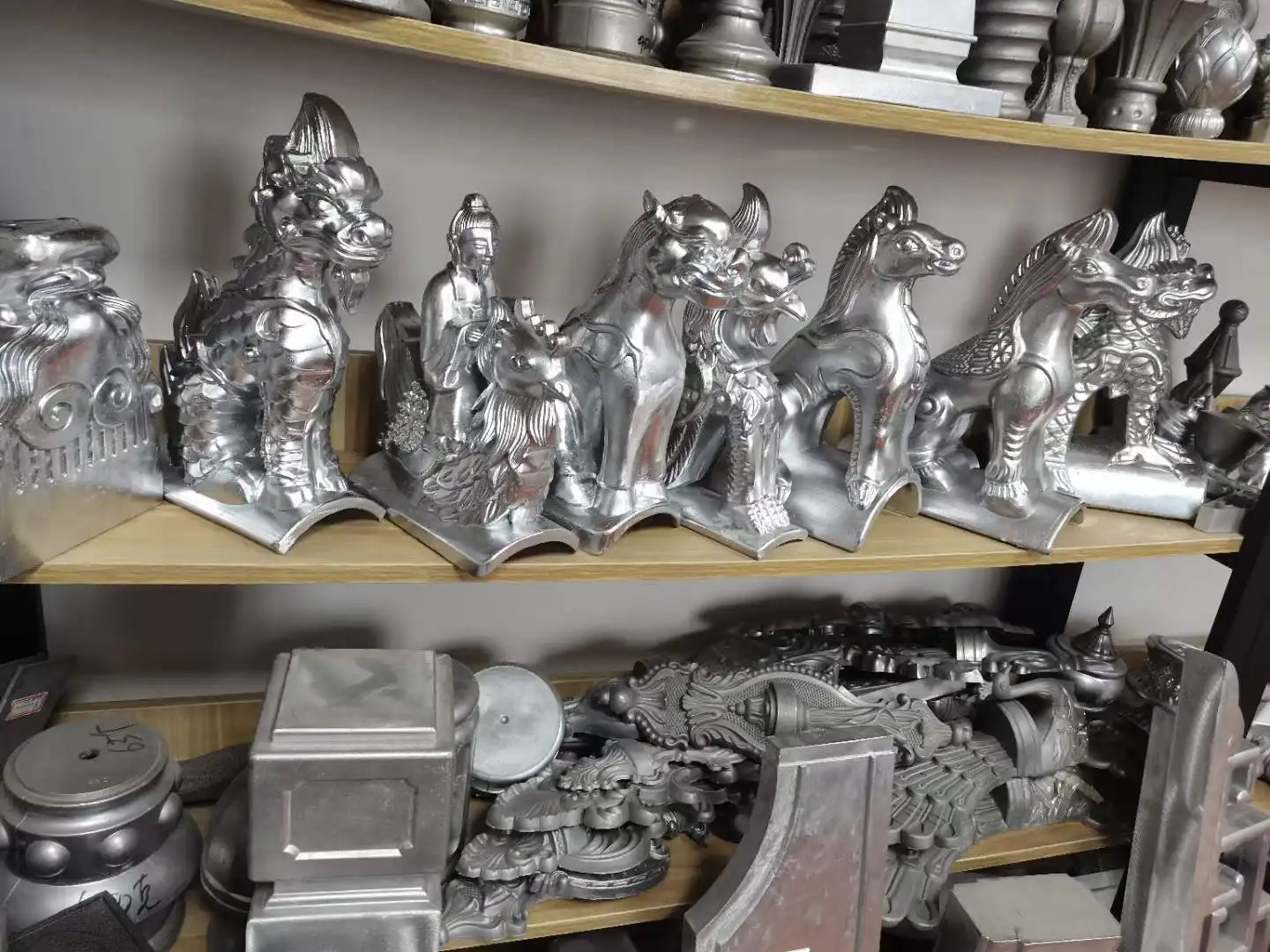Understanding the Root Causes of Aluminum Die Casting Defects
Thermal Management Issues
Thermal management plays a pivotal role in the success of aluminum die casting. Improper temperature control can lead to a host of defects. When the molten aluminum is too hot, it can cause porosity and shrinkage issues. Conversely, if it's too cool, it may result in incomplete fills or cold shuts. Maintaining the optimal temperature throughout the casting process is essential for producing high-quality parts.
Mold Design and Preparation
The design and preparation of the die casting mold significantly impact the final product's quality. Inadequate venting, improper gating systems, or poorly maintained molds can contribute to various defects. Ensuring proper mold design, regular maintenance, and appropriate preparation before each casting cycle is crucial for minimizing defects and achieving consistent results.
Material Properties and Composition
The composition and properties of the aluminum alloy used in die casting can affect the occurrence of defects. Impurities in the alloy, improper melting techniques, or using an alloy unsuitable for the specific application can lead to issues such as hot tearing, poor surface finish, or structural weaknesses. Selecting the right alloy and maintaining its purity throughout the casting process is essential for producing high-quality components.
Common Aluminum Die Casting Defects and Their Solutions
Porosity and Gas Entrapment
Porosity is one of the most prevalent defects in aluminum die casting. It occurs when gas bubbles become trapped within the solidifying metal, creating small voids or cavities. This can compromise the structural integrity and surface finish of the cast part. To address porosity, consider implementing the following solutions:
- Optimize gating and venting systems to allow gases to escape efficiently
- Ensure proper degassing of the molten aluminum before casting
- Adjust injection speed and pressure to minimize turbulence during mold filling
- Implement vacuum-assisted die casting techniques for critical components
Cold Shuts and Incomplete Fills
Cold shuts occur when two streams of molten metal meet but fail to fuse properly, resulting in a visible line or weak spot in the casting. Incomplete fills happen when the molten metal solidifies before completely filling the mold cavity. To prevent these defects:
- Increase melt and mold temperatures to improve metal flow
- Optimize gate locations and sizes to ensure balanced filling
- Adjust injection speed and pressure to maintain proper metal flow
- Consider using flow simulation software to identify potential problem areas

Hot Tearing and Shrinkage
Hot tearing is a defect that occurs when the casting is subjected to tensile stresses during solidification, causing cracks to form. Shrinkage defects result from the natural contraction of metal as it cools and solidifies. To mitigate these issues:
- Design proper cooling channels in the mold to control solidification rates
- Optimize alloy composition to reduce susceptibility to hot tearing
- Implement proper gating and risering techniques to feed shrinkage-prone areas
- Consider using computer-aided solidification simulation to predict and prevent these defects
Advanced Techniques for Defect Prevention and Quality Improvement
Process Monitoring and Control
Implementing advanced process monitoring and control systems can significantly reduce the occurrence of defects in aluminum die casting. Real-time monitoring of critical parameters such as temperature, pressure, and injection speed allows for immediate adjustments and helps maintain consistent quality. Consider investing in:
- Thermal imaging cameras for mold and metal temperature monitoring
- Pressure sensors to ensure optimal injection and holding pressures
- Automated process control systems that can make real-time adjustments
- Data logging and analysis tools for continuous process improvement
Simulation and Predictive Modeling
Leveraging computer-aided engineering (CAE) tools and simulation software can help identify potential defects before they occur in production. These tools allow engineers to optimize mold design, gating systems, and process parameters virtually, saving time and resources. Some key applications include:
- Flow simulation to predict filling patterns and identify potential defects
- Solidification modeling to optimize cooling channel design and prevent hot spots
- Stress analysis to predict and prevent warpage and distortion
- Virtual design of experiments (DOE) to optimize process parameters
Continuous Improvement and Quality Management
Implementing a robust quality management system and fostering a culture of continuous improvement is essential for long-term success in aluminum die casting. This approach involves:
- Regular training and skill development for operators and engineers
- Implementing statistical process control (SPC) techniques
- Conducting regular audits and reviews of production processes
- Encouraging feedback and ideas from all levels of the organization
- Staying updated with the latest industry trends and technologies

Conclusion
Addressing common aluminum die casting defects requires a comprehensive approach that combines technical expertise, advanced technologies, and a commitment to continuous improvement. By understanding the root causes of defects and implementing effective solutions, manufacturers can significantly enhance the quality and consistency of their die-cast components. Remember that each casting operation is unique, and what works for one may not work for another. It's essential to tailor these strategies to your specific production environment and continuously refine your processes to achieve optimal results.
FAQs
What are the most common defects in aluminum die casting?
The most common defects include porosity, cold shuts, incomplete fills, hot tearing, and shrinkage.
How can I reduce porosity in aluminum die castings?
To reduce porosity, optimize gating and venting systems, ensure proper degassing of molten aluminum, adjust injection parameters, and consider vacuum-assisted die casting techniques.
What causes hot tearing in aluminum die castings?
Hot tearing is caused by tensile stresses during solidification. It can be mitigated by optimizing alloy composition, controlling cooling rates, and implementing proper gating and risering techniques.
Expert Aluminum Die Casting Solutions | Fudebao Technology
At Fudebao Technology, we specialize in high-quality aluminum die casting and precision machining. Our state-of-the-art facilities and experienced team ensure top-notch results for automotive, industrial, and aerospace applications. As a leading aluminum foundry and supplier in China, we offer comprehensive solutions from casting to finished products. For expert assistance with your die casting needs, contact us at hank.shen@fdbcasting.com.
References
Smith, J. (2022). Advanced Techniques in Aluminum Die Casting. Journal of Materials Engineering, 45(3), 256-270.
Johnson, A., & Brown, R. (2021). Defect Analysis and Prevention in Metal Casting Processes. International Foundry Research, 73(2), 89-103.
Lee, S., et al. (2023). Optimization of Die Casting Parameters for Improved Product Quality. Materials Science and Technology, 39(4), 512-528.
Garcia, M. (2020). Thermal Management in Aluminum Die Casting: A Comprehensive Review. Journal of Thermal Analysis and Calorimetry, 142(1), 178-195.
Thompson, K., & Wilson, L. (2022). Simulation-Driven Design in Modern Die Casting. Computer Methods in Materials Science, 22(3), 401-417.
Chen, Y., et al. (2021). Quality Control and Continuous Improvement Strategies in Die Casting Industries. Total Quality Management & Business Excellence, 32(5-6), 623-640.











